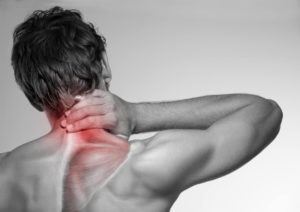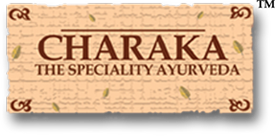 Cervical Spondylosis is a general term for age-related wear and tear affecting the spinal disks in your neck. As the disks dehydrate and shrink, bone spurs and other signs of osteoarthritis develop.
Cervical Spondylosis is a general term for age-related wear and tear affecting the spinal disks in your neck. As the disks dehydrate and shrink, bone spurs and other signs of osteoarthritis develop.
Cervical spondylosis is very common and worsens with age. There also appears to be a genetic component involved because some families will have more of these changes over time, while other families will develop less.
More than 90 percent of people older than age 65 have evidence of cervical spondylosis and osteoarthritis that can be seen on neck X-rays. Most of these people experience no symptoms from these problems. When symptoms do occur, nonsurgical treatments often are effective.
In most cases, cervical spondylosis causes no symptoms. When symptoms do occur, they typically affect only the neck — causing pain and stiffness.
Sometimes, cervical spondylosis results in a narrowing of the space needed by the spinal cord and the nerve roots that originate at the spinal cord and pass through the spine to the rest of your body. If the spinal cord or nerve roots become pinched, you may experience:
- Tingling, numbness and weakness in your arms, hands, legs or feet
- Lack of coordination and difficulty walking
- Loss of bladder or bowel control
As you age, the bones and cartilage that make up your backbone and neck gradually develop wear and tear. These changes may include:
- Dehydrated disks – Disks act like cushions between the vertebrae of your spine. By the age of 40, most people’s spinal disks begin drying out and shrinking, which allows more bone-on-bone contact between the vertebrae.
- Herniated disks – Age also affects the exterior of your spinal disks. Cracks often appear, leading to bulging or herniated disks — which sometimes can press on the spinal cord and nerve roots.
- Bone spurs – Disk degeneration often results in the spine producing extra amounts of bone, sometimes called bone spurs, in a misguided effort to shore up the spine’s strength. These bone spurs can sometimes pinch the spinal cord and nerve roots.
- Stiff ligaments – Ligaments are cords of tissue that connect bone to bone. Increasing age can make spinal ligaments stiffen and calcify, making your neck less flexible.
Diagnosis
The diagnosis of cervical spondylosis depends to a large extent on the patient’s history and the physical findings.
A variety of imaging tests can provide details to guide diagnosis and treatment. Examples include:
- Neck X-ray – An X-ray may show abnormalities, such as bone spurs, that indicate cervical spondylosis. It is ordered primarily as a screening test to look for rare, serious causes for neck pain and stiffness — such as tumors, infections or fractures.
- Computerized tomography (CT scan) – This test takes X-rays from many different directions and then combines them into a cross-sectional view of the structures in your neck. It can provide much finer details than a plain X-ray, particularly of the bones.
- Magnetic resonance imaging (MRI) – MRI uses a magnetic field and radio waves and can produce detailed, cross-sectional images of both bone and soft tissues. This can help pinpoint areas where nerves may be getting pinched.
- Myelogram – This test involves generating images using X-rays or CT scans after dye is injected into the spinal canal. The dye makes areas of your spine more visible.
In some cases, it may be helpful to determine if nerve signals are traveling properly to your muscles. Nerve function tests include:
- Electromyogram (EMG) – This test measures the electrical activity in your nerves as they transmit messages to your muscles when the muscles are contracting and when they’re at rest. The purpose of an EMG is to assess the health of your muscles and the nerves that control them.
- Nerve conduction study – For this test, electrodes are attached to your skin above the nerve to be studied. A small shock is passed through the nerve to measure the strength and speed of nerve signals.
Ayurveda Management of Cervical Spondylosis

Vatavyadhis comes under a group of diseases which manifest by dhatu kshaya or margavarana and those are classified according to hetu, sthana and lakshana. In the classification of dhatukshayajanya vatavyadhis, many degenerative conditions are considered. Cervical spondylosis can be considered one among them and can be compared with ‘Vishwachi’.
Treatment in Ayurveda is aimed at restoring the equilibrium through correction of the underlying functional in-equilibrium.
At CHARAKA, the treatment for Cervical Spondylosis is comprehensive and may include Ayurveda internal medicines & external applications for mild cases and along with these, Ayuveda Panchakarma therapies in severe cases. Diet and lifestyle modifications are applied in both the scenarios.
Panchakarma therapies like Abhyanga swedam, Elakizhi, Nasyam, Shirovasti or shirodhara, Sarvangadhara, Greeva basti, Navara or mamsa kizhi, Vasti are usually done based on the persons presentation and severity of the disease. Average duration of therapy may range between 4 – 6 weeks and most of the cases experience high recovery.

